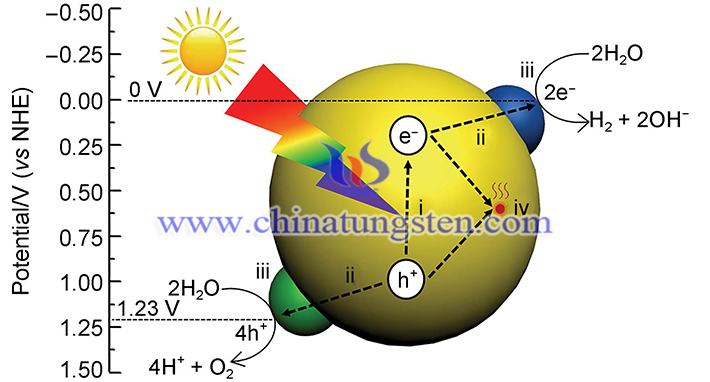Bismuth Tungstate
- Details
- Category: Tungsten Information
- Published on Thursday, 10 August 2017 14:03

Bismuth tungstate is a kind of tungstate, of which the appearance is white powder and chemical formula is Bi2WO6. The compound of orthorhombic structure is a new narrow band gap photocatalytic material with visible light response and visible light catalytic activity.
As a new photocatalyst, Bismuth tungstate has the following characteristics: (1) good response to UV and visible light; (2) thermal stability; (3) stable photocatalysis; (4) relatively low cost; (5) environmental friendly.
Due to its special layered structure, it has superior application in surface catalysis than other photocatalyst. The synthetic reaction conditions can be changed to obtain complex multi-level structures by studying and analyzing the synthesis and characterization of Bi2WO6 crystals. And this change can improve the photocatalytic activity and will have guiding function to the growth mechanism of this series of oxide nanocrystals.
Bi2WO6 Is a typical semiconductor material. After irradiation, the electrons are excited by the transition and leave the corresponding holes to form electron hole pairs. These electron holes with strong redox potential are very easy to react with organic compounds and polymers. The narrow energy gap of electron holes endowed them with good respond to the visible light, while increasing the recombination probability of these holes.
In summary, bismuth tungstate is one of the materials for making solar cells. It can also be used as a catalyst for cleaning water pollution. With the deepening of research, more and more new ways of using Bi2WO6 photocatalytic oxidation to decompose organic pollutants and hydrogen production by photolysis will be gradually developed, which has great economic benefits and important practical value in dealing with the environmental problems and solving the energy shortage.
| Tungsten Supplier: Chinatungsten Online www.chinatungsten.com | Tel.: 86 592 5129696; Fax: 86 592 5129797;Email:sales@chinatungsten.com |
| Tungsten News & Prices, 3G Version: http://3g.chinatungsten.com | Molybdenum News & Molybdenum Price: http://news.molybdenum.com.cn |



 sales@chinatungsten.com
sales@chinatungsten.com